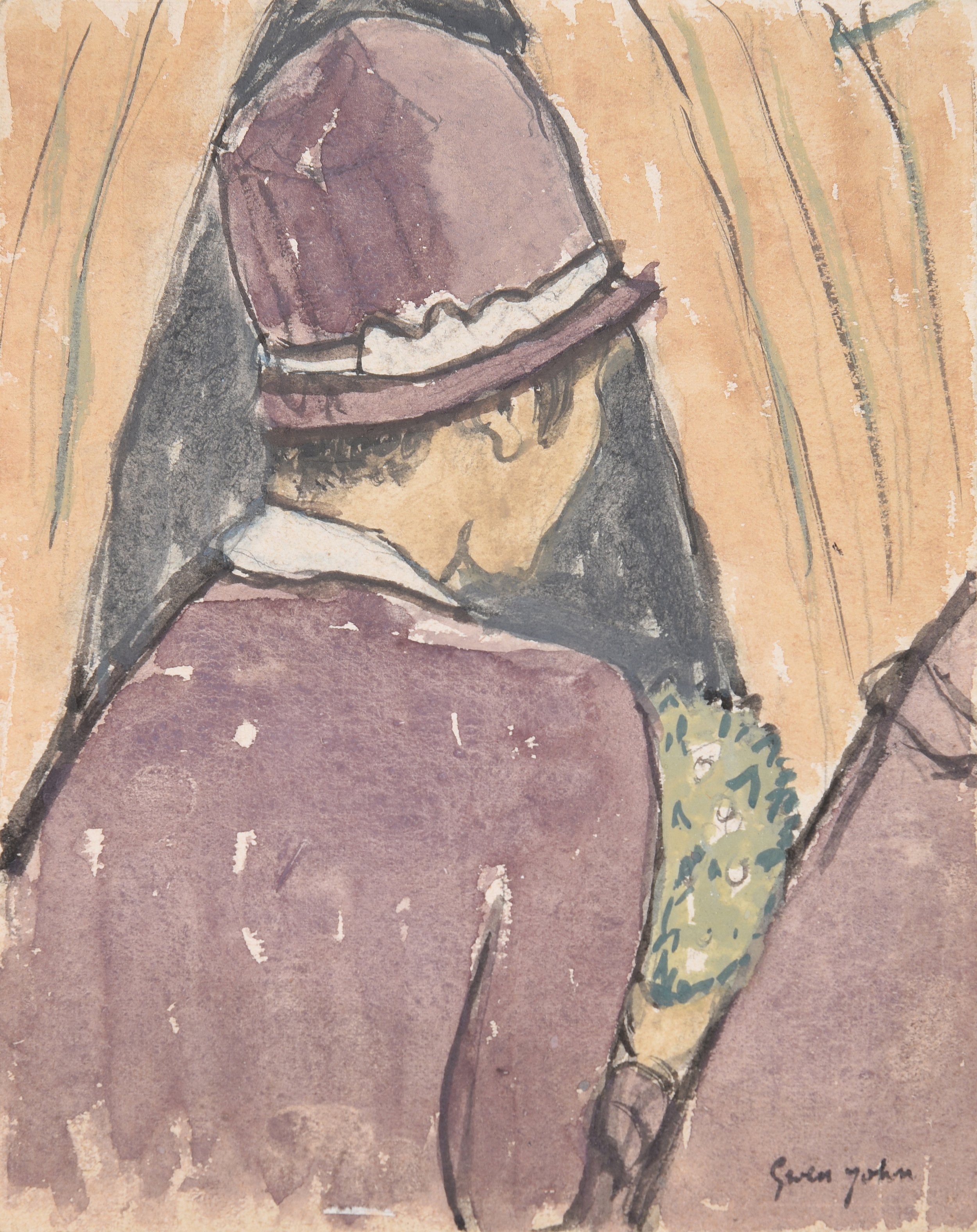Behind those cave-like curtains | Gwen John’s La Petite Négresse, at Christopher Kingzett
Gwen John (1876-1939) ,La Petite Négresse. Gouache and pencil on paper, 16 x 12.5cm. Courtesy of Christopher Kingzett.The current retrospective of the work of Gwen John, at Pallant House Gallery until October 8, attempts to dispel the widespread notion that John was something of a recluse, pointing out that she had many friends and spent most of her adult life in the bustling capital cities of London and Paris.
The melancholic tone of most of the work on show, largely of sombre female subjects in austere interior settings, often holding cats, does little to back up that theory, especially the pieces she painted after she was dumped by her lover, Auguste Rodin, in 1913, at which point she converted to Catholicism. There’s no doubting the sublime, beguiling quality of the work – she is fast eclipsing the reputation of her brother Augustus – but a whole room of austere limited-palette nun portraits hardly tells a convincing story of Gwen John living the high life in Montmartre.
The restricted palette, repeated motifs and relentless gaze revealed in the Pallant House exhibition suggest John had an obsessive side to her nature, which manifested beyond her artwork. The artist was besotted with Rodin, writing him fawning letters even after he had spurned her. When the sculptor died in 1917, she became friendly with his former secretary, the Austrian poet Rainer Maria Rilke. After Rilke’s death, in 1926, she went to mourn him near the scene of his demise, at the parish church in Meudon, where she became fixated on a woman in the congregation, a Russian-Jewish emigrée named Vera Oumançoff. She began following her home after mass every week and writing her impassioned letters on a daily basis. Oumançoff befriended the artist, but, overwhelmed by all the attention, demanded that John limit the frequency of these missives to once a week. Thereafter, between January 1928 and July 1929, usually on a Monday, Gwen John wrote to Vera Oumançoff, enclosing within the envelope a drawing or painting. Oumançoff, concerned about the effect of the relationship on John’s spiritual welfare, broke the friendship off in 1930.
My curiosity was piqued when I saw that Christopher Kingzett was planning to show the gorgeous Gwen John pencil, watercolour and gouache work La Petite Négresse (aka Woman in Mauve) at his British Art Fair stand this autumn. Further research revealed that the work measures 16x12.5cms – small enough to fit in a medium envelope. Could it have been one of her weekly presents to her Russian friend?
I corresponded with Kingzett to find out more, and he revealed that he had acquired the piece directly from the artist’s estate, ruling out that possibility. But further research revealed another version of the painting – with several subtle differences – was sold at Christie’s in 2016, having been in a private collection in France since 1929. That version has an inscription on the supporting card, stating ‘Dessin du 3ieme Lundi d’Aout, 1928’ (drawing done on the third Monday of August, 1928). Why Monday? Why indeed! I strongly suspect that this version was enclosed in one of John’s weekly letters to Oumancoff.
John was known to paint different versions of her favourite subjects, and it's not surprising she kept this one back for herself. It’s a heavenly image, which raises intriguing questions, a slice of narrative at odds with the artist’s typical output of staged face-on portraits. And a pointer to the notion that Gwen John might not have been such a recluse, after all. Where is this elegant woman going, with her mauve cloche hat and bunch of flowers? What is her relationship, if any, to the painter? And what lies behind those cave-like curtains?

